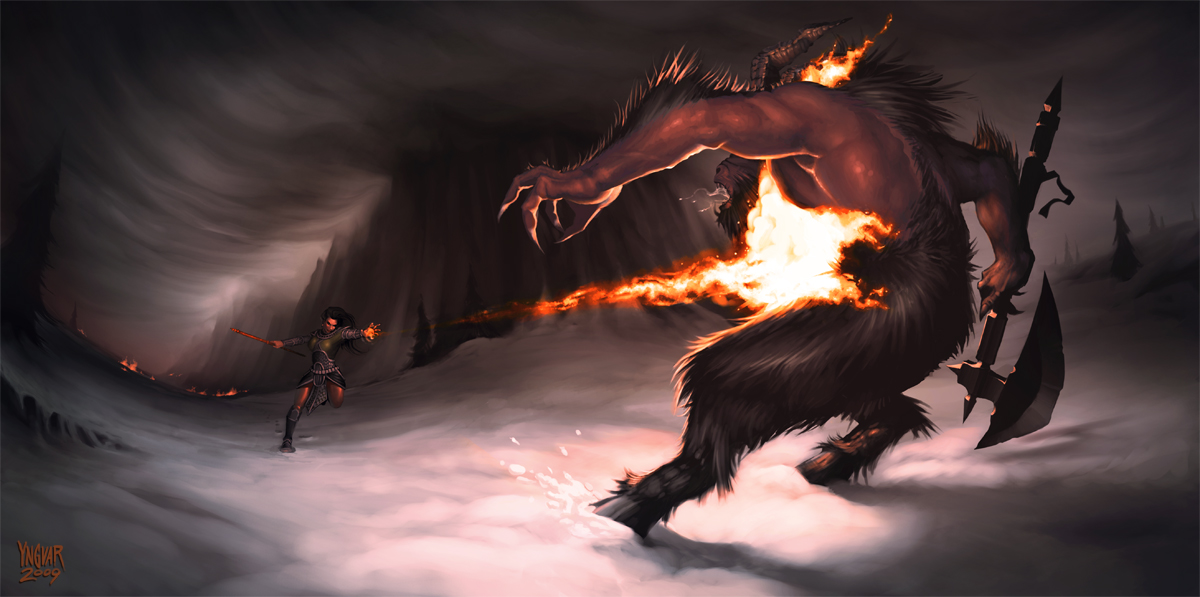Well, now I do. I'm going to start off with a topic that most people here might be interested in - making our own "minis" system.
Currently, I and my group are playing through the Rise of the Runelords right now and the group now finds themselves now at the head of a small army. This idea is one that I'm quite fond of - PCs in roleplaying games becoming part of a larger picture. It's one that's been in RPGs since the days of AD&D. If you remember, as characters became high enough level, their characters started attracting followers. The fighter got henchmen, the wizard got a tower, druids got all sorts of creatures following them, etc.
The problem was that the system was somewhat archaic, having come out about 20 years ago. So, we cleaned it up, streamlined it, and made it our own. I'm very pleased with the results. The system is quick, fast, easy, and mostly balanced.
The System
The entire combat system is meant to be extremely abstract, so the battlefield is divided into a 5x5 grid. A unit is represented by a card which fits into a square on the grid. To give you an idea of scale and movement, most units can move a single square a turn. That's it.
Each unit has an Attack, Defense, Movement, and Morale score. When attacking, you compare a unit's Attack against the opposing unit's Defense and roll on a d20 chart. The results can be as follows:
- Fall Back: The attacker screwed the pooch and has to actually fall back, but takes no damage.
- Miss: Nothing done.
- Hit: The defender takes one hit on his battle card.
- Rout: The defender is routed. That unit must flee and takes a hit on the battle card. Routed units flee back to their deployment zone, where they have a chance to rally and get back in the fight.
- Destroyed: The unit is removed from the board.
I really like that, if you attack, you can end up falling back. It can be disastrous if you go after a unit with too high of a defense. Also of note - all attacks are simultaneous. So, after you attack a defending unit, it gets to attack back, even if it would have been destroyed by your attack.
The element that I most enjoy about this system is that as each unit takes hits, their stats are adjusted. So, you might have an Attack 3, Defense 2 unit. But if it gets hit, it might go down to Attack 2, Defense 1. Or Attack 3, Defense 2. Or some other combination. When a unit runs out of hits, it is destroyed.
What I like about this system is that it gives individual units a lot of personality, without having to have a lot of stats. I could envision, for example, a unit whose stats actually go up as it takes damage (a Viking berzerker unit, for example). Or you could simply have a unit which is tough and whose stats do not degrade significantly over multiple hits.
Player Character Involvement
Characters can accompany units into battle as well. While the Birthright rules system had its own rules, we ruled the melee characters give their units static bonuses while spell casters could use spells as attack or defense.
Now, fireballs really do hit armies!
What is neat about this is that spellcasters who cast their spells in mass combat no longer have them when you zoom back down to the personal level. That's the important thing to establish here - the mass combat is meant to replace regular table top combat. It's meant to be an addition.
Our first test run was two sessions ago - our next encounter with this system is coming up. More on this as it develops!


No comments:
Post a Comment